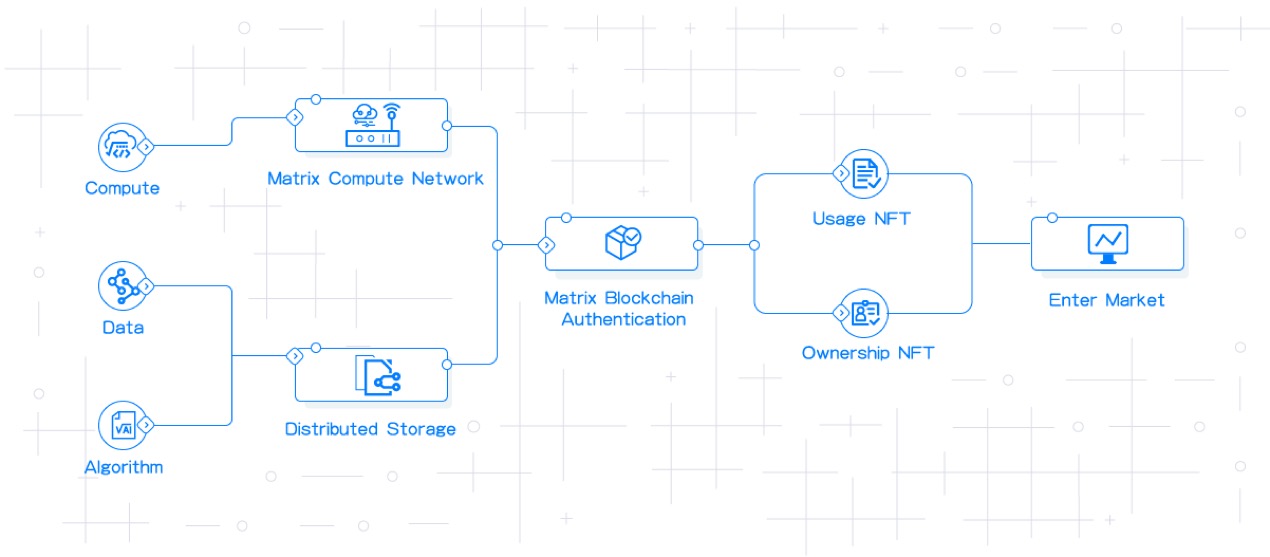MANAS—Empower AI with Blockchain (Part 3)
The Competitive Advantage of MANAS
The competitive advantage of MANAS will come in three ways: lower development barrier, more algorithm scientists and more users.
How does MANAS lower the development barrier?
AI is a brand new area for most developers. Matrix is building MANTA, the perfect tool for scientists and engineers entering the AI industry, The core of MANTA is auto-machine learning, which will lower the entry barrier to machine learning allowing people with basic computer knowledge but no AI background to participate in AI programming. Creative people with ideas but no AI knowledge can also build their own AI applications and services. Like open platforms such as iOS or Android, MANAS is also building a platform featuring diversity, and the addition of MANTA to the Matrix ecosystem will no doubt facilitate this process.
How does MANAS attract more algorithm scientists?
Besides the entry barrier, another concern for algorithm scientists is intellectual property protection. Matrix has introduced NFT using the two core technologies of distributed storage to protect the interests of algorithm scientists. When an AI algorithm has been trained, it will get authenticated on the Matrix Mainnet, and a transferable NFT will be minted and stored in the distributed storage network.

Picture: Matrix’s NFT Authentication Platform
Besides building technological advantages, Matrix is also actively exploring channels to attract algorithm scientists into its ecosystem. An example of this is Matrix’s strategic partnership with the renowned Japanese AI algorithm provider Bitgrit. In the future, Matrix will bring over 2000 top-notch algorithm scientists from Bitgrit, and people will get direct access to their quality algorithms and services.
How does MANAS acquire more users?
Decentralization is the prerequisite for a vibrant blockchain project. Matrix will not operate MANAS by itself but will share open API, SDK and the necessary development tools with everyone who has faith in the future of the platform. This will encourage more and more users to join.
Decentralized vs Centralized:Which one is the future?
Currently, AI services are an important part of the product lines of mainstream cloud computing providers such as Alibaba Cloud, AWS, Azure. These companies all have their AI service platforms. Therefore, one may wonder what advantages does MANAS has compared with traditional centralized cloud computing platforms? Can MANAS thrive in this competitive market space?
A More Competitive Ecosystem
The difference between centralized and decentralized platforms lies in who provides the AI services. Traditional centralized AI service platforms are providers themselves. As we know, the long-term development of a platform relies on a vibrant and competitive ecosystem. Just like biological ecosystems thrive in diversity, MANAS will facilitate diversified services by providing a structure like iOS or Android for independent AI algorithm scientists to deliver their services. Free market competition will motivate these services to self-improve and drive MANAS forward to a better future.
Cheaper and More Individualized Services
Different from centralized platforms, MANAS adopts a C2C business structure, as a perfectly competitive market offers the lowest service cost. At the same time, MANTA’s auto-machine learning will remove the entry barrier to MANAS, and Matrix’s decentralized computing network will provide scientists with cheap computing power, which also guarantees the competitive pricing of services and applications on MANAS.
As MANAS is a C2C platform, it will be primarily demand-driven in contrast to centralized platforms. It will satisfy a diversity of consumer demands and niche markets so that every aspect of people’s commercial life will benefit from the AI revolution.